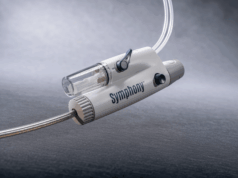New guidance published on 27 June 2012 by the UK National Institute for Health and Clinical Excellence (NICE) aims to reduce the current high toll of long-term ill health or death caused by venous thromboembolic diseases by clarifying for the first time what combination of tests and treatments results in the most clinically and cost effective diagnosis and management of the conditions.
Latest figures (from 2010/11) show that over 56,000 people – around 1,000 per week – were diagnosed with blood clots in their legs or lungs. However, diagnosis is often far from straightforward and in many cases they are only diagnosed post-mortem (in 2007 nearly 17,000 recorded deaths in England and Wales mentioned deep vein thrombosis or pulmonary embolism as either the primary cause of death or a contributory factor). Evidence suggests that as many as 50% of people in whom a blood clot in the leg is left untreated will go on to develop a blood clot in their lung. In addition, although treatments for blood clots are well established once a diagnosis is suspected or has been made, there is currently a wide variation in how such treatments are provided. There is also wide variation in practice as to when to test for thrombophilia and cancer in patients who have had a blood clot.
Importantly, the guideline is the first of its kind to recommend that investigations for cancer should be carried out in people aged over 40 years who are not already known to have cancer and who have a blood clot in their leg or lung where there is no obvious cause. This is because cancer is a significant risk factor for blood clots (people with cancer have an estimated fourfold increased rate of blood clots compared with people who do not have cancer) and because the guideline recommends that patients with cancer are given low molecular weight heparin instead of a vitamin K antagonist to treat their blood clot to reduce the risk of its recurrence.
Other recommendations in the guideline cover:
- Diagnostic investigations for deep vein thrombosis including use of the two-level deep vein thrombosis Wells score, leg vein ultrasound scanning, D-dimer testing and interim anticoagulant therapy.
- Diagnostic investigations for pulmonary embolism including use of the two-level pulmonary embolism Wells score, computed tomography pulmonary angiogram, ultrasound scanning of the large veins in the leg and interim anticoagulant therapy.
- Pharmacological interventions to treat deep vein thrombosis or pulmonary embolism including the use of anticoagulants to prevent blood clots forming or enlarging (low molecular weight heparin, fondaparinux, unfractionated heparin, vitamin K antagonists [e.g. warfarin]), different treatments for people with active cancer (low molecular weight heparin for at least six months), and thrombolytic drugs to help dissolve blood clots.
- The use of graduated compression stockings for proximal deep vein thrombosis.
- Thrombophilia testing.
Mark Baker, director of the Centre for Clinical Practice at NICE said: “Whether hospital-acquired or community-acquired, blood clots in the leg or lung can have the same devastating consequences. Their prevention in people who are admitted to hospital has quite rightly become a priority for the NHS in recent years. But despite progress in this area, particularly following the publication of the 2010 NICE guideline, every year thousands of people die in the UK of as the result of a blood clot. The majority of these are as the result of preventable hospital-acquired blood clots but many are the result of a blood clot acquired in the community. Early diagnosis and appropriate management improves outcomes but is sometimes more difficult to achieve than might be imagined. For example, the treatment for a blood clot in the leg or the lung, once a diagnosis has been confirmed, is itself not without risk since anticoagulants and thrombolytic drugs can cause serious bleeding in some patients. This new guideline, based on a review of the most up-to-date research, clarifies what combination of tests and treatments are most clinically and cost effective in reducing the unacceptable toll of long-term ill health or even death from blood clots.”
Gerard Stansby, professor of Vascular Surgery and chair of the Guideline Development Group, said: “Blood clots in the leg or lung are a common and serious problem for the NHS; unfortunately they are often misdiagnosed leading to high rates of mortality and long term disability. By giving clear guidance on how they should be investigated and then treated, this new guideline will lead to improved outcomes for people with these conditions in the NHS.”
Beverley Hunt, professor of Thrombosis and Haemostasis, medical director of Lifeblood and member of the Guideline Development Group, said: “This new NICE guideline on the management of blood clots is a major advance in improving the quality of care patients with a new deep vein thrombosis or pulmonary embolism in England and Wales receive. This is because it sets a clear standard of care that will ensure patients are managed according to the best evidence, and demand that diagnostic investigations are performed in a timely fashion.”









